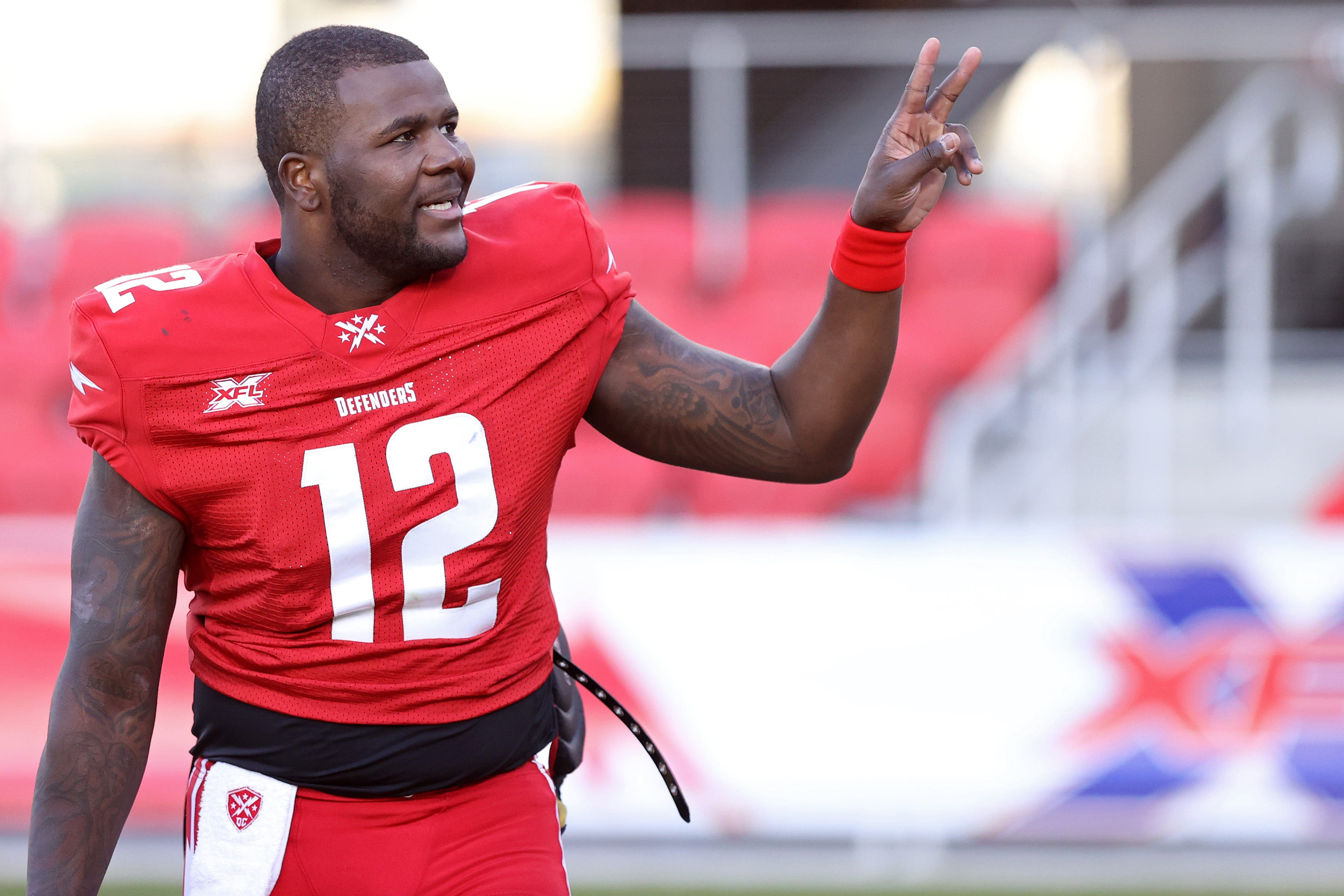XFL teams leaving plenty of points on board with lack of point-after touchdown success

As the Seattle Dragons drove into the red zone during the fourth quarter of the XFL's opening game earlier this month, the conversations buzzing in the coaching staffs' headsets had less to do with the upcoming play calls and more about what the course of action would be if they scored a touchdown.
Trailing by 12 points against the DC Defenders, the Dragons turned the ball over near the goal line, rendering the planning moot. The situation, however, provided a real-time example of the quick extra-point decisions coaches must make in the XFL.
"That was something that didn’t catch me off (guard)," said Dragons head coach Jim Zorn, who added Seattle would have attempted a three-point try to cut the deficit to three. "It was just that we talked about it. It was a real discussion and certainly a strategy in the game."
The new league eliminated kicking options after touchdowns, requiring teams to either go for one point (from the 2-yard line), two points (from the 5) or three points (from the 10). Thus far, the results have been less than inspiring.
Teams are a combined 7-for-23 on one-point attempts. Two-point tries are being converted at a 28.5% clip at 4-for-14, with the Houston Roughnecks scoring two in their first game. (The Tampa Bay Vipers cannot be blamed here — they haven't even found the end zone yet.)
More: Southern Cal. native Nelson Spruce shines in spotlight in XFL's return to Los Angeles
More: DC Defenders wide receiver Eli Rogers skips his mom's funeral to play XFL game
In the NFL, teams went a combined 54-for-113 on two-point attempts, which are tried from the 2-yard line, in 2019.
The XFL sought to differentiate itself from the NFL by introducing the three-point attempt. But the first week of games saw no three-point tries, until two last week.
Part of the problem is that teams, outside of a game situation like the Dragons faced in Week 1, don't have much of a reason to push the ball back to the 10 for an added point or two.
"It's one thing to practice certain situations, but then it's a whole different dynamic of sorts to attempt a three-pointer in a real football game," said DC Defenders coach Pep Hamilton, whose team attempted the first three-point try in the league. The next day, the Los Angeles Wildcats converted the first three-pointer in XFL history.
But unless the score influences the decision, coaches have little incentive to go for three, or even two. If the first two weeks are any indication, the one-point try will be the default position by most teams. But add in the two-point conversion analytics that argues going for two while down by 14 and has caught on in the NFL, and XFL coaches have plenty to consider.
Hamilton sees value in keeping it simple.
"Truthfully, it's tough. Analytically, statistically, when you look at just running a play from the 2-yard line, it goes back to running the football," Hamilton said. "The easiest way to get 2 yards is to run it right at them.
"But that's still, the percentages say that that's still going to be a tremendous challenge because you're always going to be outnumbered at the line of scrimmage. There's no reason for us not to have ways to counter whatever they do defensively. ... When we need to make a play in any given point-after-touchdown situation, we'll be prepared."
On their three-point attempt last Saturday, the Defenders ran their second double forward pass of the game — another wrinkle in XFL rules. But lining the ball up at the 2 crunches the playbook and naturally lends itself to predictability, and vice versa, DC quarterback Cardale Jones said.
"It's tough, even going for one from the 2-yard line," he said. "You can almost bank on a run, and further back, you're throwing a pass. It's tough, but it's part of the game we definitely need to get better at, because it can definitely give us an advantage."